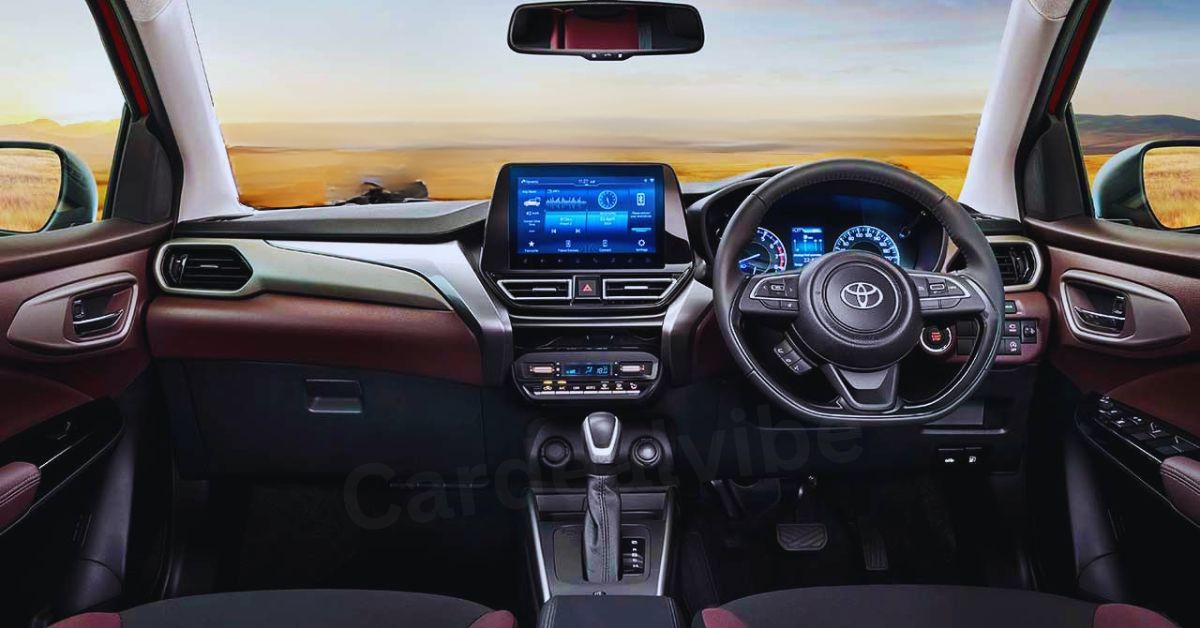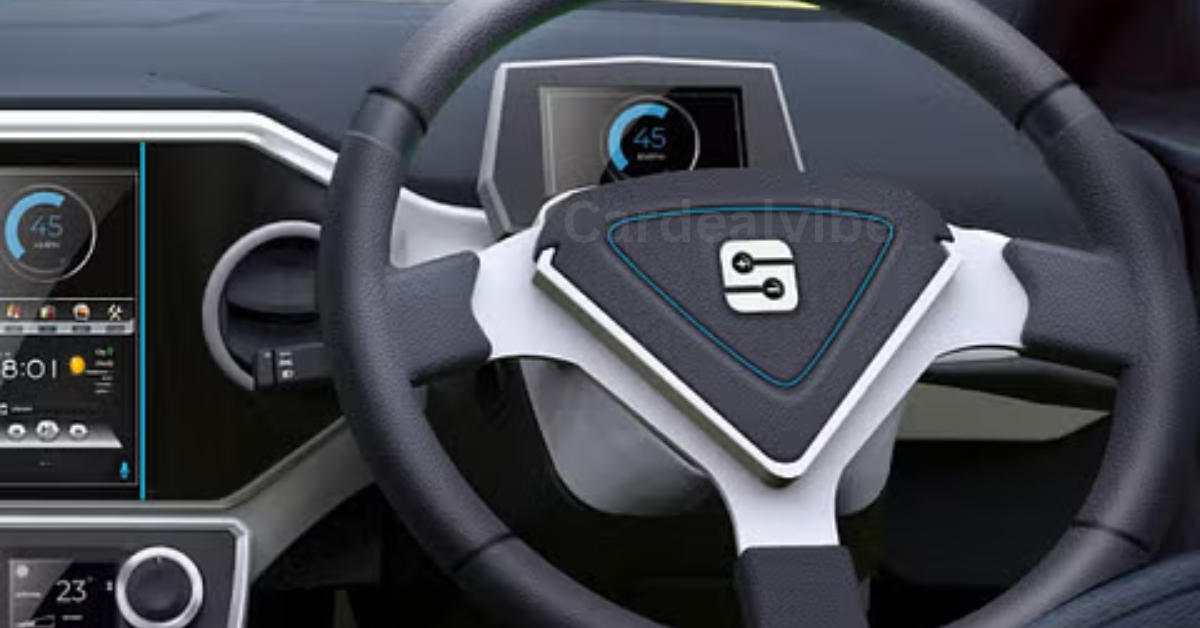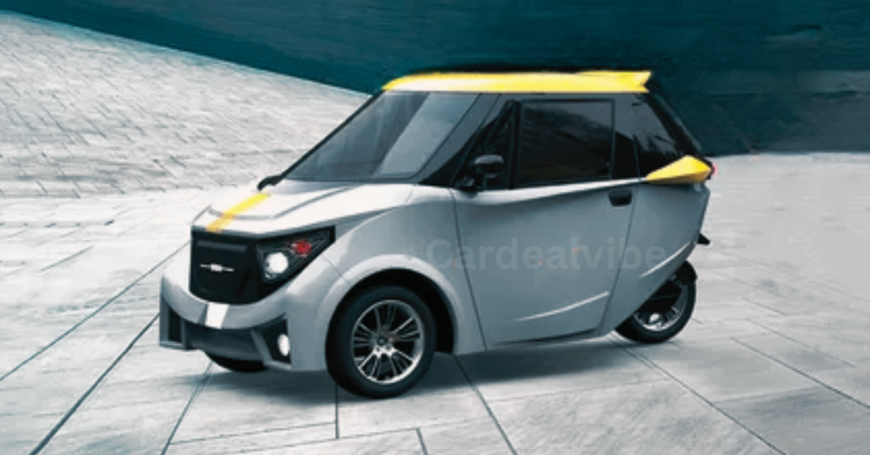BYD Seagull
In July 2024, BYD Seagull is anticipated to debut in India. The anticipated starting price for Seagull is ₹ 10 Lakh. A hatchback that will compete with the Comet EV, eC3, and Punch EV is the BYD Seagull.
Seagull Specs, Features, and Price
Automatic transmission is an option. A seagull is a vehicle.
Key Specifications of BYD Seagull
| Body Type | Hatchback |
Engine & Transmission
| Regenerative Braking | No |
| Transmission Type | Automatic |
Fuel & Performance
| Fuel Type | Electric |
Charging
| Fast Charging | No |
Also Read: Mahindra XUV 3XO
The Maruti Fronx and Toyota Taisor Differ in This Way
The Maruti Fronx is now available in Toyota form as the Toyota Taisor, which shares the same feature set and powertrain options. Even though they are nearly identical, there are a few distinctions between the two that may influence your choice of vehicle. If you are having trouble choosing between the two, have a look at these three key variations.
Distinct Style

These crossovers share the same general dimensions and shape, but certain subtle design cues help to distinguish one from the other. The Tailor has a revised bumper, slimmer LED DRLs, and a larger, narrower grille than the Fronx. Both have three lamps for headlights, while the Fronx’s taillights match its three-piece LED DRL. Together with new taillight lighting, the Taisor also receives unique 16-inch alloy wheel designs.
CNG Options
A 1.2-liter petrol CNG powertrain producing 77.5 PS and 98.5 Nm is shared by the Fronx and Taisor, and it is mated to a 5-speed manual transmission. However, the Taisor is the only vehicle to provide the greener fuel in its base-spec E form. In contrast, the Fronx comes with a CNG powerplant option available in two variants: the base-spec Sigma and the mid-spec Delta, the latter of which adds more features and comforts to the package.
Variants of Turbo-petrol

The 1-liter turbo-petrol engine from Fronx, which produces 100 PS and 148 Nm, is also coupled to a 5-speed manual or a 6-speed automatic transmission in the Taisor, just like it is in the CNG powertrain. This engine option is limited to the top-spec G and V models of the Toyota-badged SUV. But this engine is available from the Fronx in three different variants: Zeta, Alpha, and Delta+, which reduces the price by over a lakh.
These are the main product distinctions between the Toyota Taisor and Maruti Fronx. Both SUVs are reasonably priced and provide almost the same level of comfort to their respective clientele. However, given these distinctions, which would you choose? Tell us in the comments section below.
Read More On – Reduced Prices For Citroen C3 And C3 Aircross
Skoda Kodiaq 2024
In June 2024, the Skoda Kodiaq 2024 is anticipated to go on sale in India. The starting pricing of Kodiaq 2024 is anticipated to be ₹ 40 Lakh. The SUV Skoda 2024 will compete with the MU-X, Meridian, and Fortuner models. The Kodiaq 2024 will only be offered with a gasoline fuel option.
Kodiaq 2024 Specs, Features and Price
The Skoda 2024 is available with a single petrol engine. The 1984 cc petrol engine. Automatic transmission is an option.
Key Specifications of Skoda Kodiaq 2024
| Fuel Type | Petrol |
| No. of Cylinders | 4 |
| Engine Displacement | 1984 cc |
| Transmission Type | Automatic |
| Body Type | SUV |
Engine & Transmission
| Displacement | 1984 cc |
| No. of Cylinders | 4 |
| Valves Per Cylinder | 4 |
| Regenerative Braking | No |
| Transmission Type | Automatic |
Fuel & Performance
| Fuel Type | Petrol |
Read More On: Toyota Urban Cruiser Taisor
Electric Car Under Rs.1.39 Crore in India
A five-seater electric vehicle is the Mercedes-Benz EQE SUV. Ex-showroom, the Mercedes-Benz EQE SUV costs ₹ 1.39 Cr. It has a battery range of 550 kilometers. It has a top speed of 210 kmph and can go from 0 to 100 km/h in just 4.9 seconds. There are nine color options for this model. The Mercedes-Benz EQE SUV EV has received an overall user rating of 3.9 out of 5 based on feedback from users.
Color Options: Sodalite Blue, Polar White, Manufaktur Diamond White, Emerald Green, Velvet Brown, Manufaktur Alpine Grey, Obsidian Black, High-tech Silver, and Selenite Grey are the nine color options that Mercedes offers for the EQE SUV.
Features an all-wheel-drive electric motor with 408 PS and 858 Nm, paired with a 90.56 kWh battery pack. The range is also provided. With a top speed of 210 kmph, it can reach a range of up to 550 km according to WLTP. It can accelerate from 0 to 100 kmph in 4.9 seconds.
Options for charging include a 170 kW DC fast charging option that can charge a device from 10 to 80 percent in less than 30 minutes and an 11 kW wall box charger.
Features: A 12.3-inch driver’s display, a 17.7-inch central display, and a 12.3-inch front passenger display are some of the main features. Other features include four-zone climate control, a 15-speaker, 750 W Burmester 3D Surround sound system with Dolby Atmos, and an air purification system called “Energising Air Control Plus.”
Safety: Advanced driver assistance systems (ADAS) with lane-keep assist, brake help, auto emergency braking, and park assist are among the safety features that include nine airbags, ABS with EBD, electronic stability control (ESC), and a 360-degree camera with a transparent bonnet feature.
Read More On – BYD Seal Upcome Car Under 41 – 53 Lakh
Strom Motors R3
On-Road Price of Strom Motors R3
The starting price of Strom Motors R3 in New Delhi is ₹ 4.50 Lakh. The Strom Motors R3 2-Door is the most expensive model, costing ₹ 4.50 Lakh, while the Motors R3 2-Door is the least expensive model. For the best deals, visit the Strom Motors showroom in New Delhi that is closest to you. mainly contrasted with the Maruti Alto K10 starting at ₹ 3.99 Lakh and the Maruti S-Presso starting at ₹ 4.26 Lakh in New Delhi. View the prices of every Strom Motors R3 variation in your city.
R3 Specs, Features and Price
One electric engine is available for the Strom Motors R3. Automatic transmission is an option. The dimensions of the two-seater R3 are 1450 mm in width, 2903 mm in length, and 2907 mm in wheelbase.
Key Specifications of Strom Motors R3
| Max Power | 20.11bhp |
| Seating Capacity | 2 |
| Max Torque | 90 Nm |
| Range | 200 km |
| Body Type | Hatchback |
| Boot Space | 300 Litres |
Key Features of Strom Motors R3
| Power Windows Front | Yes |
| Alloy Wheels | Yes |
| Air Conditioner | Yes |
| Passenger Airbag | No |
Engine & Transmission
| Motor Power | 15 kW |
| Motor Type | AC induction Motor |
| Max Power | 20.11bhp |
| Max Torque | 90 Nm |
| Range | 200 km |
| Running Cost | ₹ 0.4/km |
| Battery Warranty | 100000 |
| Battery Type | Lithium ion |
| Charging Port | AC TYPE 2 |
| Transmission Type | Automatic |
| Gear Box | 1-Speed |
| Drive Type | RWD |
Fuel & Performance
| Fuel Type | Electric |
| Emission Norm Compliance | ZEV |
| Top Speed | 80 kmph |
Charging
| Charging Time | 3 H |
| Fast Charging | No |
Suspension, Steering & Brakes
| Front Suspension | MacPherson Struct |
| Rear Suspension | Dual Shock Absorbers |
| Shock Absorbers Type | Dual Shock Absorbers |
| Front Brake Type | Hydraulic Disc |
| Rear Brake Type | Drum |
Dimensions & Capacity
| Length | 2907 mm |
| Width | 1450 mm |
| Height | 1572 mm |
| Boot Space | 300 Litres |
| Seating Capacity | 2 |
| Ground Clearance (Laden) | 185 |
| Wheel Base | 2903 mm |
| Front Tread | 1570 mm |
| Kerb Weight | 550 Kg |
| No. of Doors | 2 |
Comfort & Convenience
| Power Windows-Front | Yes |
| Air Conditioner | Yes |
| KeyLess Entry | Yes |
| Voice Command | Yes |
| USB Charger | Front |
| Drive Modes | 2 |
| Additional Features | 3 HRS CHARGING TIME, Range Options 120/160/200* Km (On A Single Charge) |
Interior

| Tachometer | No |
| Additional Features | Human Interface, 3 seaters also there |
Exterior
| Adjustable Headlights | Yes |
| Power Adjustable Exterior Rear View Mirror | Yes |
| Alloy Wheels | Yes |
| Tinted Glass | Yes |
| Rear Spoiler | Yes |
| Sun Roof | Single Pane |
| Tyre Size | 155/80 R13 |
| Tyre Type | Tubeless,Radial |
| Wheel Size | R13 Inch |
| Additional Features | FRONT 100L (Front) AND BACK 300L (Rear) STORAGE |
Safety
| No. of Airbags | 0 |
| Passenger Airbag | No |
| Side Airbag-Front | No |
| Side Airbag-Rear | No |
| Advance Safety Features | 3-Point Seatbelts, |
Entertainment & Communication
| Cd Player | No |
| CD Changer | No |
| DVD Player | No |
| Radio | No |
| USB & Auxiliary input | Yes |
| Compass | Yes |
| Touch Screen | Yes |
| Touch Screen size | 7 |
| Internal Storage | Yes |
Also Read: The Price Of The Newly Released Kia Sonet HTE (O) And HTK (O)





